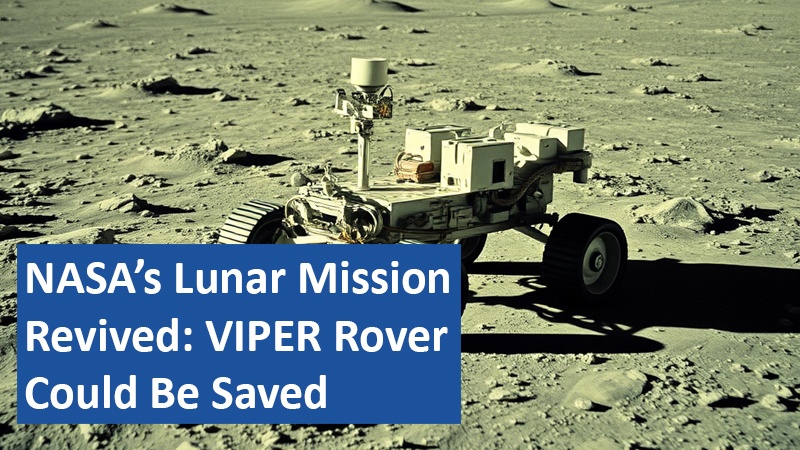
NASA’s VIPER rover was set to play a key role in the search for water ice on the Moon before budget cuts led to its cancellation in July 2024. Now, the project might still move forward as NASA turns to private companies to help deliver the rover to the Moon. This collaboration aims not only to save the mission, but also to accelerate the growth of commercial space exploration.
Click here for the best Amazon deals!
A Crucial Role in the Artemis Program
The VIPER (Volatiles Investigating Polar Exploration Rover) was designed to explore water ice deposits at the Moon’s South Pole. These resources could be vital for future missions, providing drinking water, oxygen, and fuel for deep space exploration. The goal was to gather data on the distribution and composition of these valuable materials to support long-term human presence on the Moon.
Originally scheduled for a 2024 launch, the mission was halted due to financial constraints. Now, NASA is seeking private sector partners to help get VIPER to the Moon. This move highlights the increasing influence of commercial space companies in major scientific endeavors.
Partnerships with the Private Sector
By opening the VIPER project to private companies, NASA is giving U.S. firms the opportunity to land the rover on the Moon and conduct its scientific operations. The contract involves not only transporting VIPER, but also overseeing its navigation and data collection. This initiative is part of a broader strategy in which private enterprises play an expanding role in space exploration.
Companies like SpaceX, Blue Origin, or Astrobotic are among the potential partners. NASA views this collaboration not just as a means to save the VIPER mission, but also as a way to develop commercial space capabilities. If private firms can successfully execute complex missions, they could significantly enhance the efficiency of future space exploration.
Lunar Exploration as a Future Model
VIPER’s primary objective is to examine the availability of water ice in permanently shadowed lunar craters, as these deposits could be critical for sustainable Moon missions. The findings could benefit not only Artemis program missions but also potential lunar bases and future Mars expeditions.
This shift in approach reflects a broader change in space exploration, where private companies take on an increasingly significant role alongside government agencies. If VIPER succeeds, it could serve as a model for future collaborations between NASA and private industry, marking the beginning of a new era in space exploration.
Looking Ahead
NASA’s decision to rely on private companies for the VIPER mission could pave the way for further commercial space projects. If successful, this partnership would mark a milestone in government-industry collaboration in space exploration. What role should private companies play in future Moon and deep space missions?
The revival of the VIPER mission through private partnerships highlights the growing role of commercial involvement in space exploration. This collaboration could boost efficiency and innovation in future research missions. If this model proves successful, it could set the standard for upcoming Moon and Mars missions.
Should private space companies take on greater responsibility for scientific missions? Or should NASA continue to handle these projects independently? Share your thoughts in the comments!
Based on content from www.dailygalaxy.com and own research.